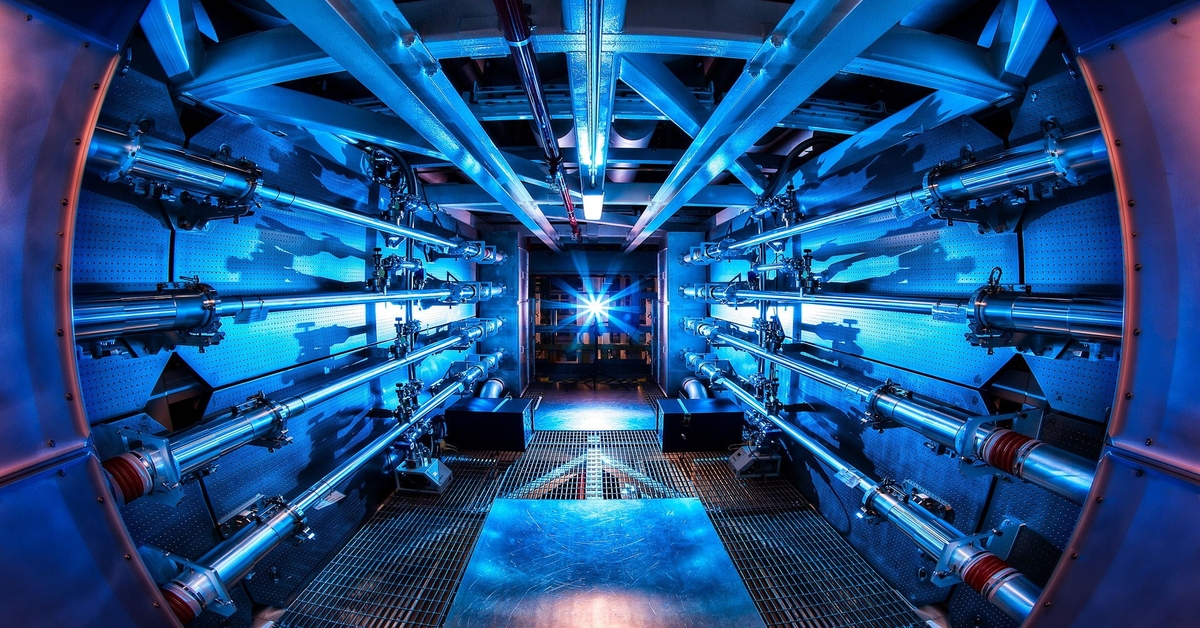Imagine pointing hundreds of high-power laser beams at a tiny capsule the size of a pencil eraser. You’d think that the focal point would get so hot it’d match the temperature of the sun.
Well, you’re not wrong!
That’s a much simpler explanation of what Lawrence Livermore National Laboratory’s (LLNL) National Ignition Facility (NIF) is doing to achieve nuclear fusion.
And just a couple of weeks ago, LLNL researchers had a major breakthrough in producing fusion energy – for the first time, a fusion reaction has achieved a record 1.3 megajoules in energy output, inching towards fusion ignition.
But what’s fusion ignition?
Hotter than the Sun.
Reaching fusion ignition is essentially the goal of every nuclear fusion facility. It’s the industry term for a nuclear fusion plasma that produces more energy than it requires to power up. So far, no facility has achieved fusion ignition.
Triggering nuclear fusion is not at all a walk in the park. It requires fulfilling all elements of Lawson’s criterion for fusion: a temperature of over 100 million degrees (a few times greater than the Sun’s temperature), a plasma of nuclei in a completely ionised state, stripped of electrons, and the maintenance of an extremely dense plasma of over 200 trillion nuclei per cubic centimetre for one second.
To achieve this, the NIF fired 192 laser beams – a total of 1.92 megajoules of UV light – onto a tiny cylindrical gold chamber called a hohlraum. The laser beams enter the hohlraum through the holes at the top and the bottom and then strike the hohlraum’s inside walls. The resulting X-rays blow off the surface of a tiny diamond capsule, containing deuterium and tritium (isotopes of hydrogen) fuel, causing a spectacular implosion that fuses the hydrogen atoms and releases enormous amounts of energy.
Though falling short by 0.62 megajoules, the researchers achieved an improvement of over eight times than experiments conducted just earlier this year, and 25 times greater than experiments conducted in 2018.
However, three recent attempts trying to replicate that breakthrough result have all fallen short. According to the facility’s scientists, they still have plenty more to do with respect to tweaking the properties of the fusion chamber and capsule, where even tiny imperfections could lead to a huge loss in fusion efficiency.
Fusion tech galore.
While LLNL uses inertial confinement to generate fusion energy (think: big lasers), there exist other methods to produce fusion energy too.
Perhaps the most common approach to nuclear fusion is magnetic confinement, where the plasma is confined by a strong magnetic field in a tokamak reactor. (think: doughnuts)
The International Thermonuclear Experimental Reactor, or ITER, a demonstration reactor currently under construction in the south of France involving 35 countries, uses the tokamak configuration. Upon completion in late 2025, it will be the world’s largest fusion reactor and aims to go beyond fusion ignition. ITER is designed to reach a fusion energy gain factor of at least 10 – 50 megawatts of power will be consumed to generate the plasma and in return, 500 megawatts of power will be produced for commercial usage.
Another configuration to look out for is the field-reversed configuration (FRC) used by TAE Technologies. Though less expensive and less complex than tokamak reactors, FRC reactors still have a long way to go with respect to the optimisation of their design before they can truly be commercialised.
Though the joke about fusion energy is that it’s “always 30 years away”, recent strides in fusion science and technology coupled with massive investments might finally retire that saying. Commonwealth Fusion System, who successfully raised $1.8 billion from investors including Bill Gates, plans to unveil the first fusion power plant by 2030.
Nuclear fusion may be key to meeting the future energy demands worldwide, which will only proliferate in decades to come. But whether the technology will mature quickly enough to deal with climate issues in the near term remains to be seen.




































